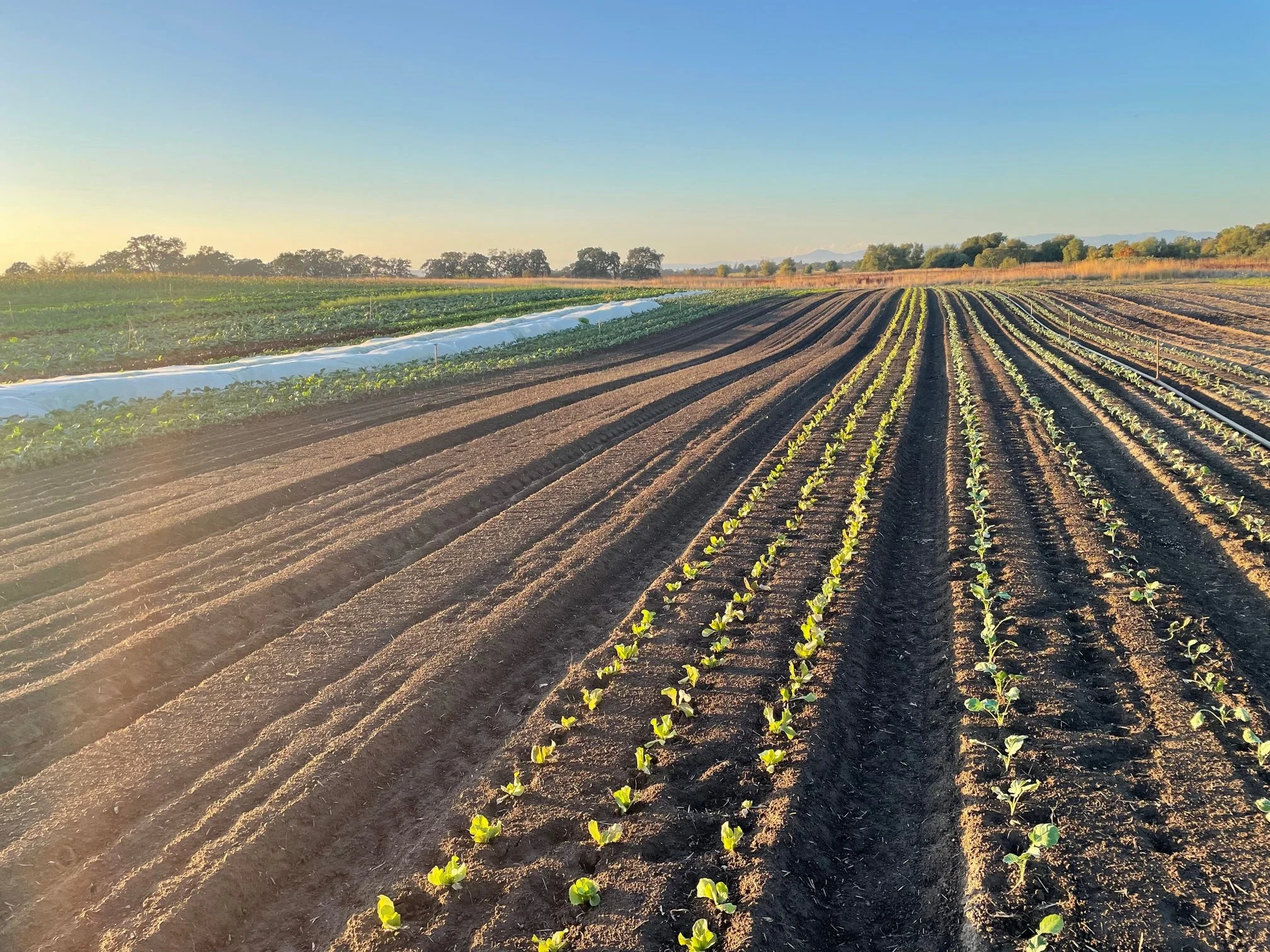THIS WEEK’S HARVEST
In the dark season, remember: Popcorns are little kernels of sunlight exploding in your pot
Pennsylvania Dutch Butter Flavored Popcorn, Indigo Radicchio, Dandelion Greens, Dino Kale, Leeks, Celery Root, Mixed Daikon Radishes, Cabbage, Bolero Carrots, Beets, Desiree Red Potatoes, Elsye Yellow Onions, Lorz Softneck Garlic, your choice of Buttercup Bonbon Squash or Marina di Chioggia Pumpkin
HARVEST NOTES
Pennsylvania Dutch Butter Flavored Popcorn: Quite the name, huh? This is our first year growing this variety and it is a winner. An excellent popper, it looks beautiful in the bowl snow white and flecked with amber butter shells — and it does taste like butter! The trick to stove top popcorn is to use a thick bottomed put like a dutch oven. This distributes the heat evenly and prevents burning. Pour a generous amount of high heat oil into the bottom of your pot. You can be generous with the oil so that it covers the kernels at least half way up. Turn the stove on to medium high and heat the oil a little bit before pouring the kernels in. Put the lid on and enjoy the fireworks!
Marina di Chioggia Pumpkin: (aka Sea Pumpkin or Suca Braca, "warty pumpkin") is an Italian heirloom from the seaside town of Chioggia and is the staple squash of Venice. This is a versatile pumpkin that can be utilized in any recipe where a traditional pumpkin is called for. It is an excellent dessert pumpkin for pies, muffins and quick bread; it makes an ideal filling for pasta such as ravioli and tortellini; and it can also be used to make gnocchi. The pumpkin itself will keep for up to six months when stored in a cool, dry, and dark place. We love the diverse bounty that can be made from this pumpkin! When we have the time we love to make a big batch of gnocchi (check out this recipe ) for the freezer so that we have many incredibly fast and delicious meals to look forward to. Or consider using it as a show-stopping centerpiece for a big gathering using the recipe below!
BonBon Buttercup Winter Squash: The other squash to choose from this week is, in your farmers’ opinion, the best squash ever bred. Ultra sweet and flaky, this squash is like a dessert all on its own. Also great for use in any of your favorite winter squash dishes.
WHEN DOES THE CSA END?
Because of the wet Spring and late start we had, our 2023 harvest season will run all the way until the third week of December this year! The last Saturday pickup will be December 16th, and the last Tuesday pick-up of the year will be December, 19th.
WHEN CAN I RESERVE MY SPOT FOR 2024?
We are deep in the planning phases for next season, rest assured, current members will be given the first chance to reserve a spot in our 2024 CSA program! We usually open sign-ups in January.
Savory Stuffed Pumpkin with Sausage and Gruyère
From The Kitchn, who adapted it from the great Dorie Greenspan
This recipe is the epitome of cozy winter cooking. It will work perfectly with either of the winter squash options in the share this week. For a large gathering, we recommend Marina di Chioggia , but keep in mind that it will take a significant amount of baking time in the oven — up to 3 or 4 hours depending on size. If you’re more interested in expediency, and having a smaller meal, the Bonbon will also make a delicious vessel!
INGREDIENTS
1 large baking pumpkin (approximately 5 to 10 pounds)
1 (1-pound) loaf day-old crusty bread, such as sourdough or French baguette
1 1/2 cups (about 5 1/2 ounces) grated Gruyère cheese
2 tablespoons neutral cooking oil, such as canola
1 pound uncooked Italian sausage or bulk sausage, any casings removed
3 large shallots, thinly sliced
2 to 3 large cloves garlic, minced
1/4 cup dry white wine
2 to 3 heaping cups spinach, Swiss chard or kale, coarsely chopped
4 large eggs
2 cups half-and-half (or 1 cup heavy cream and 1 cup whole milk)
2 teaspoons Dijon mustard
2 teaspoons kosher salt, plus more to taste
1 teaspoon fresh thyme leaves
Freshly ground black pepper
1/4 cup grated Parmesan cheese, for the top
INSTRUCTIONS
Preheat the oven to 350°F (or for a larger pumpkin, 400°F). Line a baking sheet with parchment paper or a silicone baking mat. Place the pumpkin on a flat work surface. Using a heavy-duty knife inserted at a 45-degree angle, carefully cut out a “lid” from the top of the pumpkin. Remove any seeds and cut away any loose strings using kitchen shears. Transfer the pumpkin to the prepared baking sheet and set aside.
Combine the bread cubes and Gruyère in a large mixing bowl and set aside.
Heat the oil in a large skillet over medium to medium-high heat. Add the sausage and cook, stirring occasionally and breaking it into crumbles with a wooden spoon, until it is golden-brown and cooked through, about 8 minutes. Using a slotted spoon, transfer the sausage to the bowl with the bread and cheeses
Reduce the heat to medium and add the shallots, cooking until softened, about 5 minutes. Add the garlic and cook for 30 seconds. Increase heat to high and add the wine, using the wooden spoon to scrape up any brown bits from the bottom of the pan. Reduce the wine until it is almost evaporated. Add the spinach or chard and a generous pinch of salt; stir until wilted, 1 to 2 minutes. Add the spinach or chard to the bread mixture.
In a separate bowl, whisk the eggs, half-and-half, Dijon, 2 teaspoons salt, thyme, and pepper until combined to make the custard. Pour the custard over the bread mixture and gently toss to coat. Let sit, stirring occasionally, until absorbed, about 10 minutes
Transfer the stuffing to the pumpkin, filling it all the way to the top. (If there is extra, you can bake it in a small dish on the side.) Fit the “lid" back onto the pumpkin and transfer to the oven
Bake until the filling is bubbling and hot, and the flesh of the pumpkin can be pierced with a knife. This can be anywhere from 1 to 2 (or more) hours, depending on the size and type of your pumpkin. If possible, remove the cap for the last 30 to 45 minutes of baking (sprinkle with grated Parmesan and fluff lightly if the stuffing has smushed down) so the top can crisp up a bit. To ensure that the stuffing is done, look for an internal temp of 165°F.
Carefully transfer the pumpkin to a serving platter. Slice the pumpkin into large wedges and serve along with a generous portion of stuffing.
Local Wine, handmade gifts, and meal kits for sale this week!
We’re excited to be hosting a couple pop-ups from CSA members with goods for sale this week!
Join us on Saturday from 9:30 - 1 for a pop up from Lisa Chatham. Her company, Cookma features a line of one-pot meal kits for nourishing meals that are ridiculously easy to make and are excellent CSA companions. She’ll be giving samples of her Nourishing Kitchari (with veggies from the farm) and selling her full line.
The Wool Witch, a fellow CSA member, will be hosting a table at this week’s Tuesday and next week’s Saturday pickups. She will offer a mix of homemade soaps, tinctures, essential oil rollers and wool/alpaca rugs as well as local Eric Kent wine at 50% off! Come get your gifts, some made with herbs from our garden, or treat yourself!
Hawks Feather Olive Oil will be back this week for both Saturday and Tuesday pickups in case you haven’t had a chance to try their delicious local olive oil.
FARMER’S LOG
HARBOR
It was a bittersweet harvest morning today — the last Friday harvest morning of our 2022 harvest season. This Tuesday’s harvest pick-up will be the last of our 2022 CSA harvest season.
If each harvest season is like a voyage — with us farmers & CSA members together on a grand harvesting adventure — we have reached our harbor now.
But what an adventure we had!
We outfitted an entirely new ship this year, with an entirely new crew, and we tested our mettle in uncharted waters. We weathered storms. We battled pirates (mostly deer). There were days when the world was our oyster and there were days when we were caught between the devil and the deep blue sea. But in the end, it was a bounteous voyage.
It was a year of abundant umbellifers and strawberries (once we got rid of the pirates); of radiant flowers and sweet winter squash. Our catch of potatoes would make Forrest Gump and Bubba jealous. In the end we fed over 300 adults and 140 Sonoma County kiddos with regenerative, soil building practices.
All thanks to you, dear members.
You see, the community supported agriculture that we practice here, that we ask you to practice here, is not a gimmick or a fad. It is not a clever way to sell farm produce ahead of time. It is a direct relationship between a human community and the land and the farmers that feed it. We are one crew on this voyage. And that bond allows us to farm well; to farm intentionally; to farm for the future.
Each Spring, human beings all over the world set out on adventures of gathering and growing food. When farmers kick off on their yearly voyage, they know not what awaits them; whether their nets will come up empty; if they’ll make it back to shore. Farming is risky. As the climate changes, these voyages are only going to get more precarious.
Vanishingly few farmers have a community with them on their voyages like we do.
So as we close out this Farmer’s Log on 2022, let it be known that any and all the abundance we enjoyed this year was because of your commitment, and our commitment to each other, to take care of each other and the land. There is no safer harbor than that.
And now for our customary parting words…
If, in the dark season ahead, you feel pent up, like you need to get out of the house and stretch your legs, come visit the farm and stand still for a moment in a field.
There you will find silence, broken only by the screech of a hawk or the singing of the blackbirds. A coolness will emanate up from the wet soil, chilling your knees. Before you will lay the sleeping farm, the soft contours of the land draped in a blanket of green.
But listen closely...
For within that slumber next season churns. The cover crop stretches its living roots deep into the soil where subterranean creatures break down this year's roots and residue, processing them — like so many memories — into the raw materials that will make up next year’s stories, next year’s voyage, next year's bounty.
Listen closely and you’ll hear the land dreaming.
Now, it is time for your farmers to rest, to reflect, and to do a little dreaming ourselves. Thank you all so much for the memories this harvest season. Here is to many more to come.
See you in the fields,
David for Kayta













